 |
 |
 |
 |
 |
 |
| |
 |
|
 |
 |
 |
  |
  |
 |
 |
 |
 |
|
|
 |
|
 |
 |
 |
BUILDING |
 |
|
 |
|
 |
 |
 |
| |
 |
| 
 |
Serpentine Gallery Pavilion
|
|
 |
 |
 |
 |
DESIGNER |
 |
|
|
 |
|
 |
 |
 |
| |
 |
|
 |
 |
 |
 |
DESCRIPTION |
 |
|
|
 |
|
 |
 |
 |
|
|
 |
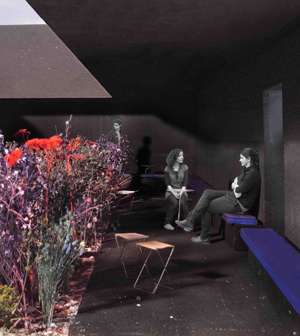 The Serpentine Gallery has reveal the plans for the Serpentine Gallery Pavilion 2011 by world-renowned Swiss architect Peter Zumthor. This year’s Pavilion is the 11th commission in the Gallery’s annual series, the world’s first and most ambitious architectural programme of its kind. It will be the architect’s first completed building in the UK and will include a specially created garden by the influential Dutch designer Piet Oudolf. The Serpentine Gallery has reveal the plans for the Serpentine Gallery Pavilion 2011 by world-renowned Swiss architect Peter Zumthor. This year’s Pavilion is the 11th commission in the Gallery’s annual series, the world’s first and most ambitious architectural programme of its kind. It will be the architect’s first completed building in the UK and will include a specially created garden by the influential Dutch designer Piet Oudolf.
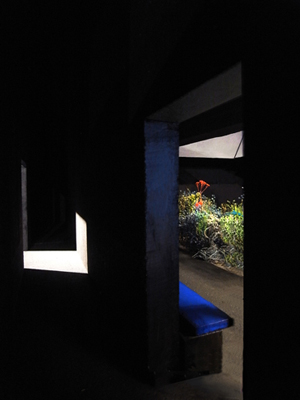 At the heart of Peter Zumthor’s Pavilion is a garden that the architect hopes will inspire visitors to become observers. Zumthor’s says his design ‘aims to help its audience take the time to relax, to observe and then, perhaps, start to talk again - maybe not.’ The design emphasises the role the senses and emotions play in our experience of architecture. With a refined selection of materials Zumthor creates contemplative spaces that evoke the spiritual dimension of our physical environment. As always, Zumthor’s aesthetic goal is to customise the building precisely to its purpose as a physical body and an object of emotional experience. At the heart of Peter Zumthor’s Pavilion is a garden that the architect hopes will inspire visitors to become observers. Zumthor’s says his design ‘aims to help its audience take the time to relax, to observe and then, perhaps, start to talk again - maybe not.’ The design emphasises the role the senses and emotions play in our experience of architecture. With a refined selection of materials Zumthor creates contemplative spaces that evoke the spiritual dimension of our physical environment. As always, Zumthor’s aesthetic goal is to customise the building precisely to its purpose as a physical body and an object of emotional experience.
Zumthor has stated that ‘the concept for this year’s Pavilion is the hortus conclusus, a contemplative room, a garden within a garden. The building acts as a stage, a backdrop for the interior garden of flowers and light. Through blackness and shadow one enters the building from the lawn and begins the transition into the central garden, a place abstracted from the world of noise and traffic and the smells of London – an interior space within which to sit, to walk, to observe the flowers. This experience will be intense and memorable, as will the materials themselves – full of memory and time.’
Materials have always played an evocative as well as an essential role in the buildings designed by Zumthor. The 2011 Pavilion will be constructed of a lightweight timber frame wrapped with scrim and coated with a black paste mixed with sand. Exterior and interior walls with staggered doorways will offer multiple paths for visitors to follow, gently guiding them to a central, hidden inner garden. The covered walkways and seating surrounding this central space will create a serene, contemplative environment from which visitors may look onto the richly planted sunlit garden, the heart and focus of the building.
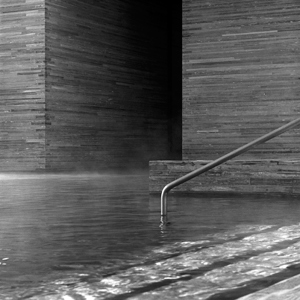 With this Pavilion, as with previous structures such as the famous Thermal Baths at Vals, Switzerland, or the Bruder Klaus Chapel in Mechernich, Germany, Zumthor has emphasised the sensory and spiritual aspects of the architectural experience, from the precise yet simple composition and ‘presence’ of the materials, to the handling of scale and the effect of light. With this Pavilion, as with previous structures such as the famous Thermal Baths at Vals, Switzerland, or the Bruder Klaus Chapel in Mechernich, Germany, Zumthor has emphasised the sensory and spiritual aspects of the architectural experience, from the precise yet simple composition and ‘presence’ of the materials, to the handling of scale and the effect of light.
The Serpentine’s Pavilion commission, conceived in 2000 by Gallery Director Julia Peyton-Jones, has become an international site for architectural experimentation and follows a decade of Pavilions by some of the world’s greatest architects. Each pavilion is sited on the Gallery’s lawn for three months and the immediacy of the commission – a maximum of six months from invitation to completion – provides a unique model worldwide.
Julia Peyton-Jones, Director, and Hans Ulrich Obrist, Co-Director, Serpentine Gallery, said: “It is an honour and a great joy to be working with Peter Zumthor on the 11th Serpentine Gallery Pavilion. The commission allows us to connect with best architects in the world and each year is an exciting and completely new experience. Zumthor’s plans will realise an exquisite space for the public to enjoy throughout the summer.”
Zumthor’s Serpentine Gallery Pavilion will operate as a public space and as a venue for Park Nights, the Gallery’s high-profile programme of public talks and events. Park Nights will culminate in the annual Serpentine Gallery Marathon in October, now in its sixth year. In 2006 the Park Nights programme included the renowned 24-hour Serpentine Gallery Interview Marathon, convened by Hans Ulrich Obrist and architect Rem Koolhaas; in 2007, by the Serpentine Gallery Experiment Marathon presented by artist Olafur Eliasson and Hans Ulrich Obrist; in 2008, Obrist led over 60 participants in the Serpentine Gallery Manifesto Marathon. This was followed in 2009 by the Serpentine Gallery Poetry Marathon and in 2010 by the Serpentine Gallery Map Marathon.
Edit by Serpentine Gallery |
|
 |
 |
 |
|
 |
|
| Hortus conclusus |
 |
|
 |
Peter Zumthor
Haldenstein, May 2011
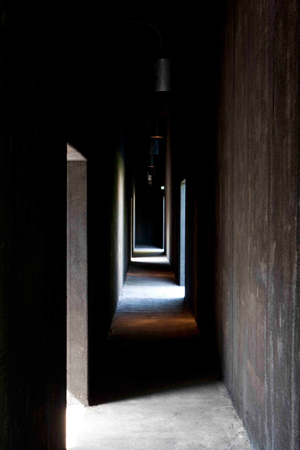 We come from nature and we return to nature; we are conceived and born; we live and die; we rot or burn and vanish into the earth. I rarely thought about such things when I was young. Now I do. I see a great cycle and I am part of it. For a little while, I am here. I did not exist before my time and I will no longer exist after my time. But in my time, I belong to the process of life on this planet; for a little while I am part of the organism of human beings, animals and plants that exists on this planet and that passes life on. We come from nature and we return to nature; we are conceived and born; we live and die; we rot or burn and vanish into the earth. I rarely thought about such things when I was young. Now I do. I see a great cycle and I am part of it. For a little while, I am here. I did not exist before my time and I will no longer exist after my time. But in my time, I belong to the process of life on this planet; for a little while I am part of the organism of human beings, animals and plants that exists on this planet and that passes life on.
Looking back I realise that I have always taken plants for granted; they were part of my surroundings; they were self-evident and I enjoyed them as meadows, gardens or woods. That has changed. I have become more attentive to the plant world even though I never studied it and know only a few plants by name. But I like being with them. To me, their presence is quieting.
Plants embody everything that I like to have around me: presence, personality, character. They are supple and therefore strong, yet softly-spoken and gentle; they are fragrant and delicate; they have movement, colour, structure, scale and proportion. Plants are large in form, tiny in detail and always a single whole. Plants are beautiful in sun and rain, in tropical heat, fighting immortal cold, dancing in the wind, buffeted by storms.
Plants have long been part of the earth’s history. They come from afar. Their beauty is deep and beyond question. It can be overwhelming; their fragrance beguiling. I look at my garden and I see vibrancy, opulence, serenity; I see dignity, playfulness, infinite tenderness, the nodding kindness of Herb Roberti, and in the larger, beautiful picture, I discover small, modest dots of colour that enhance the luxuriant whole.
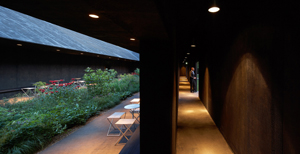 Landscapes mark the surface of the earth. Billions of plants react to sun, wind and weather, to heat and humidity, to drought and cold, to the nature of the soil in which they grow; they ceaselessly converge to form new plant societies and landscape ensembles. They are infinite in number and variety; they grow naturally and are influenced by us: oases, steppes, forests, wetlands, meadows, moors, landscaped parks. And there are gardens: herb gardens, kitchen gardens, vegetable gardens, flower gardens, rose gardens, pleasure gardens. Every name listed here evokes a distinct image; with each of them I associate specific lighting, smells and sounds, many kinds of rest, and a deep awareness of the earth and its flora. Landscapes mark the surface of the earth. Billions of plants react to sun, wind and weather, to heat and humidity, to drought and cold, to the nature of the soil in which they grow; they ceaselessly converge to form new plant societies and landscape ensembles. They are infinite in number and variety; they grow naturally and are influenced by us: oases, steppes, forests, wetlands, meadows, moors, landscaped parks. And there are gardens: herb gardens, kitchen gardens, vegetable gardens, flower gardens, rose gardens, pleasure gardens. Every name listed here evokes a distinct image; with each of them I associate specific lighting, smells and sounds, many kinds of rest, and a deep awareness of the earth and its flora.
A garden is the most intimate landscape ensemble I know of. It is close to us. In it we cultivate the plants we need. A garden requires care and protection. And so we encircle it, we defend it and fend for it. We give it shelter. The garden turns into a place.
Enclosed gardens fascinate me. A forerunner of this fascination is my love of the fenced vegetable gardens on farms in the Alps, where farmers’ wives often planted flowers as well. I love the image of these small rectangles cut out of vast alpine meadows, the fence keeping the animals out. There is something else that strikes me in this image of a garden fenced off within the larger landscape around it: something small has found sanctuary within something big.
The hortus conclusus that I dream of is enclosed all around and open to the sky. Every time I imagine a garden in an architectural setting, it turns into a magical place. I think of gardens that I have seen, that I believe I have seen, that I long to see, surrounded by simple walls, columns, arcades or the façades of buildings – sheltered places of great intimacy where I want to stay for a long time.
The centre of my pavilion is a garden; it invites us to gather around. We will meet in the garden. I am looking forward to the natural energy and beauty of the tableau vivant of grasses, flowers and shrubs that Piet Oudolf has created and will plant for our hortus conclusus. I am looking forward to the colours and shapes, the smell of the soil, the movement of the leaves, the scent of the Bugbane and Joe Pye Weed. Piet tells me that butterflies and bees love their smell. |
|
 |
 |
 |
|
 |
|
Inside Every Person (However Serious or Playful)
Lies an ‘Enclosed Garden’ |
 |
|
 |
Alexander Kluge
Excerpt from catalogue: Peter Zumthor, Serpentine Gallery Pavilion 2011
Translated by Martin Brady & Helen Hughes
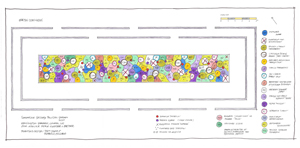 Monasteries in medieval Europe were wells in which the clear waters of antiquity mingled with the dark waters of faith. At the centre of these monasteries was a garden, the most important part of which was enclosed. It was here that the most beautiful plants and medicinal herbs were concentrated. Learned monks and abbots could be found here at appointed times. The gardens were not everyday places and were timeless insofar as they were not subject to ritual. Known as hortus conclusi, such gardens were dedicated to the Blessed Virgin, but exposed to the texts of Homer, Ovid or the Gnostics if the powerful were not careful. In them the mythical unicorn also dwelt, a creature which can now only be found on British coats-of-arms. Monasteries in medieval Europe were wells in which the clear waters of antiquity mingled with the dark waters of faith. At the centre of these monasteries was a garden, the most important part of which was enclosed. It was here that the most beautiful plants and medicinal herbs were concentrated. Learned monks and abbots could be found here at appointed times. The gardens were not everyday places and were timeless insofar as they were not subject to ritual. Known as hortus conclusi, such gardens were dedicated to the Blessed Virgin, but exposed to the texts of Homer, Ovid or the Gnostics if the powerful were not careful. In them the mythical unicorn also dwelt, a creature which can now only be found on British coats-of-arms.
One must imagine the earth in early times before civilisation itself. It was more barren than we think. That is true of the watery deserts of the oceans, of the steppes and of the jungles in which either too little or too much grows. Only seldom, but then with startling beauty, did nature also create her gardens: oases, meadows, valleys. These natural gardens are the template for all gardens. They are not pious; they are the ‘art of nature’.
Now people enter the picture. Evolution has brought forth two kinds of animals: prairie animals and cave animals. Our forefathers divided themselves into these two types. In the modern human being, however, they no longer exist side-by-side but intertwine. A modern human being needs both: a house (cave) and a horizon (field).
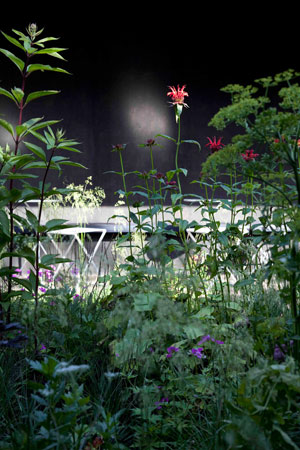 Gardens differ on account of these two necessities. There are open gardens, which, like the English garden, embrace an abundance of nature. Then there are the enclosed gardens, such as the sacred groves of Hölderlin, the hortus amoenus (garden of the senses), a garden full of weeds, or the gardens of mock ruins that were fashionable in the eighteenth century. Unlike fields, their surfaces have nothing to do with usefulness. They distinguish themselves from houses and greenhouses in knowing no sense of time and in existing without human beings. They just wait. They are a late echo of that paradise in which, for a time, two people lived in harmony with nature and did not regard themselves as the most important beings. Gardens differ on account of these two necessities. There are open gardens, which, like the English garden, embrace an abundance of nature. Then there are the enclosed gardens, such as the sacred groves of Hölderlin, the hortus amoenus (garden of the senses), a garden full of weeds, or the gardens of mock ruins that were fashionable in the eighteenth century. Unlike fields, their surfaces have nothing to do with usefulness. They distinguish themselves from houses and greenhouses in knowing no sense of time and in existing without human beings. They just wait. They are a late echo of that paradise in which, for a time, two people lived in harmony with nature and did not regard themselves as the most important beings.
These gardens are also inside people. There are the sayings: ‘My brain is like a freshly raked garden’, used whenever you feel at one with yourself, or ‘I went for a walk in the gardens of my imagination.’ There is also, if nature’s powerful paw has struck, as it did recently in Fukushima, the ‘Japanese garden’, which signifies unshakable calm in the face of extreme danger, because there is a place within that is ordered, like a garden. The ‘Hanging Gardens of Semiramis’ are one of the Seven Wonders of the World. Even as a child I wanted to know what kind of gardens they were. And I still do. We could also talk about a utopia or a heterotopia in which, instead of daily media reports, there are gardens of information.
The creation of gardens is a branch of architecture, of town planning, but not of agriculture. For this reason, the Dutch tulip fields of early capitalism (whose ultimate product would be London’s tulip mania) are not gardens. Nurseries and the silk farms of the mercantile period in central Europe are good investments rather than gardens. True gardens are a luxury just as the cities of the Renaissance once were. To this day, special gardens are found in the metropolis. Central Park in New York is no agora – it is more suited to getting a breath of fresh air than to business.
The most successful gardens adhere to the Classical ideal according to which the garden should reflect the complexities of character of the person who takes pleasure in spending time within it. In Die Serapionsbrüder (1819), the poet E.T.A. Hoffmann describes the house belonging to the character Councillor Krespel. This man has been of service to his Count and, as a reward, he is permitted to build himself a house at the expense of that gentleman. First, he has a compact, square building constructed. Then, he tells the builders how he imagines the entrance, rooms, hallways, bathrooms and windows should look. These are subsequently modelled to fit into the solid entity according to Krespel’s feeling for proportion, until the house and the person become identical. The hortus conclusus is just such a concentration of identity: an intimate setting that not only stems from the eighteenth century revival of classicism, but also offers an entry to heaven. It is a precursor of individualism, but has unmistakable traits in a way individualism never can.
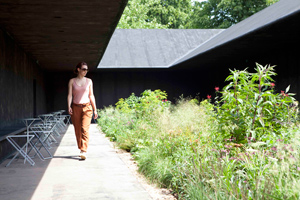 This is how people interact with gardens. In the hortus conclusus, or ‘Mary’s little garden’, they not only encounter nature, but also the Mother of God – although it is quite possible that the Mother of God could metamorphose into Artemis–Diana of the Crescent Moon, you can never know. And if Athena–Minerva were to live in the same garden it would explain why philologists, those ‘gardeners of words’, love the hortus conclusus. This is how people interact with gardens. In the hortus conclusus, or ‘Mary’s little garden’, they not only encounter nature, but also the Mother of God – although it is quite possible that the Mother of God could metamorphose into Artemis–Diana of the Crescent Moon, you can never know. And if Athena–Minerva were to live in the same garden it would explain why philologists, those ‘gardeners of words’, love the hortus conclusus.
I was touched to learn that Peter Zumthor is building this year’s Serpentine Gallery Pavilion as a hortus conclusus. And I’ll own up to my own special interest at the outset. In the profession in which I work – the production of moving images – we are experiencing a repeat, albeit at high speed, of the evolution from primordial nature to modernity described above. The Internet has increased participation in the public sphere exponentially (far more than was the case with the revolution heralded by Johannes Gutenberg’s invention of the printing press). For this reason, it is all the more important to relate the garden islands that emerge spontaneously to the concept of the garden more generally. Thus my friends and I at the Development Company for Television Programmes (DCTP) are working on ‘Gardens of Information’. Our guiding principle is to rescue facts from human indifference. Or, put another way: to make gardens out of raw material and the bare bones of information. Nature shows us how it’s done by producing coral reefs in nutrient-deficient waters. Ancient civilisations did something similar when, in the third century BC, they built the great Library of Alexandria in an age of illiteracy. What can stand emblematically in the twenty-first century for this relationship between the barren wastes on the one hand, and the happy isle on the other? One possibility is the emblem of the hortus conclusus, the ‘enclosed garden’. The fact that an architect of Zumthor’s stature is building a temple to this principle delights me.
Those of us on the cinematographic front line could do with an architect like Zumthor to show us how to unite mind and eye, and to help us find a context from which to understand the confusing realities of our age. This can’t be achieved through superstructures, pyramids, concepts or by building a roof over our heads. It is only possible through inclusive structures (just as an insect from the distant past is found in amber, a natural art work). The hortus conclusus is inclusive in this way. Vast reserves of energy, of the kind described by the great Renaissance physician, botanist and alchemist Paracelsus, are contained within them: small numbers of such magical places can have unpredictably powerful effects around the world.
In the beginning, our predecessors wrested fertile fields from nature. Then fields-upon-fields became cities. Without piety, these culminated in Babel, a single enormous tower that begets the confusion of language. For this reason, civilisation and societies need ground that is uncultivated, gaps that are not subject to the principle of utility, something that is sufficient unto itself, which we do not consume: a sacrifice. Cities need spaces of piety. As the sociologist Richard Sennett puts it: ‘We need places in which we can also engage in acts of mourning.’ Yet, such places are rare. Sennett calls for architects to produce these spaces, as well as to create horti amoeni (pleasant places) and environments in which music can be played that are not simply concert halls. These are, I believe, the most important aspects of the hortus conclusus.
The term hortus conclusus is often translated as meaning ‘a serious place’. Yet, as Sigmund Freud observed in relation to children, seriousness and playfulness are not opposites. The same, he claimed, could be said for the arts. Each is only intensely real when in the other’s company. The hortus conclusus is the ideal place for them to meet.
|
|
 |
 |
 |
|
 |
|
| Serpentine Gallery Pavilion Commission |
 |
|
 |
| There is no budget for the Serpentine Gallery Pavilion commission. It is paid for by sponsorship and sponsorship help-in-kind, as well as the sale of the finished structure which does not cover more than 40% of its cost. The Serpentine Gallery collaborates with a range of companies and individuals whose support makes it possible to realise the Pavilion. The Serpentine Gallery Pavilion commission is an ongoing programme of temporary structures by internationally acclaimed architects and designers. The series is unique worldwide and presents the work of an international architect or design team who has not completed a building in England at the time of the Gallery’s invitation. |
|
 |
 |
 |
|
 |
|
| Serpentine Galleries Pavilion History |
 |
|
 |
|
 |
 |
 |
|
 |
|
| Arup |
 |
|
 |
Peter Zumthor will collaborate with engineering firm Arup to realise the 2011 Serpentine Gallery Pavilion. The Arup team, led by David Glover, Ed Clark and Chris Neighbour, will provide all engineering and specialist technical advice for the project. Arup Director Ed Clark commented: “It is a privilege to support the Pavilion again in 2011. This is our tenth year of commitment to the programme which reflects our belief in the project and the positive experience our teams get from working with some of the most renowned architects of our time. It’s an incredibly exciting opportunity. We look forward to working with Peter and helping him to deliver his first building in the UK.”
» Buldings by Arup on AR
» Structural consulting by Arup on AR
|
|
 |
 |
 |
|
 |
|
| Piet Oudolf |
 |
|
 |
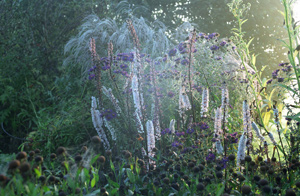 Piet Oudolf’s projects include the internationally renowned High Line in New York, which involved planting along a railway line that winds through the city. Combining minimalism with ecology, this garden was conceived of as a series of interwoven elements that lead visitors along a richly planted path. Piet Oudolf’s projects include the internationally renowned High Line in New York, which involved planting along a railway line that winds through the city. Combining minimalism with ecology, this garden was conceived of as a series of interwoven elements that lead visitors along a richly planted path.
Other notable designs include the Lurie Garden in Millennium Park, Chicago; Wisley, the Royal Horticultural Society Garden in Surrey; Il Giardino delle Vergini at the 2010 Venice Biennale; and his own innovative garden in Hummelo, The Netherlands.
He is the recipient of numerous awards including the 2010 Award of Distinction by the Association of Professional Landscape Designers and the 2009 Dalecarlica Award, Sweden. Oudolf’s garden was also awarded ‘Best in Show’ at the 2000 Chelsea Flower Show, London.
In 2010 he was named as one of the 100 Most Creative People in Business by Fast Company. |
|
 |
 |
 |
|
 |
|
|
|
 |
|
 |
 |
 |
 |
 |
 |
 |
VIDEO |
 |
|
|
 |
|
 |
 |
 |
| |
 |
|
 |
 |
 |
 |
MATERIALS |
 |
|
|
 |
|
 |
 |
 |
 |
 |
|
wood, cloth Structure and materials
- Concrete strip foundations
- Timber frame superstructure
- Sheet plywood covering
- Skin,black Idenden over scrim
- Bench,Prussian blue stained timber
- Floor,black Idenden with sand over scrim
Lighting
- Recessed spotlights under cantilever soffit in internal garden spacev Pendant lighting
- External festoon lighting
Colour scheme
- Black Idenden over scrim across entire pavilion, inside and outside, excluding the bench
- Bench, Prussian blue stained timber
Furniture
- Zinc coated steel table, folding
- Zinc coated steel chair,canvas seating, folding
Garden
- Richly planted shrubs, flowers, grasses,according to the instruction of Piet Oudolf
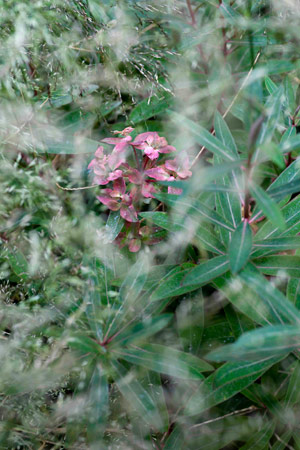
Plants chosen by Piet Oudolf for the Serpentine Gallery Pavilion Garden
- Aconitum wilsonii ‘Barkers
- Anemone x hybrida ‘Honorine Jobert’
- Angelica archangelica
- Aster macrophyllus ‘Twilight’
- Astrantia major ‘Claret’
- Cimicifuga (Actaea) ramosa ‘James Compton’
- Deschampsia ‘Goldschleier’
- Digitalis ferruginea ‘Gigantea’
- Eupatorium maculatum ‘Riesenschirm’
- Euphorbia ‘Kings Caple’
- Festuca ovina
- Geranium psilostemon ‘Patricia’
- Heuchera villosa
- Iris sibirica ‘Perry’s Blue’
- Kirengeshoma palmata
- Liriope muscari ‘Big Blue’
- Lobelia x ‘Vedrariensis’
- Molinia ‘Edith Dudszus’
- Molinia litoralis ‘Transparent’
- Persicaria amplexicaulis ‘Alba’
- Polystichum setiferum ‘Herrenhausen’
- Rodgersia pinnata ‘Superba’
- Sanguisorba canadensis
- Scutellaria incana
- Selinum wallichianum
- Stachys officinalis ‘Hummelo’
- Thalictrum rochebrunianum
- Tricyrtis formosana
|
|
 |
 |
 |
 |
LOCATION |
 |
|
|
 |
|
 |
 |
 |

|
 |

|

|
 |

|
|
|
 |
|
Website |
|
 |
|
 |
 |
 |
 |
MAP |
 |
|
|
 |
|
 |
 |
 |
| |
 |
|
 |
 |
 |
 |
|
TYPOLOGY |
 |
|
|
 |
|
 |
 |
 |
|
|
 |
ARCHITECTURE | Commercial buildings
Bars, cafeterias
Urban equipment and structures for public areas
Structures for public areas
Other architectural structures
Pavilions, kiosks, facilities
| |
 |
 |
 |
 |
CHRONOLOGY |
 |
|
|
 |
|
 |
 |
 |
Project |
 |
|
 |
| 
 |
2011 - 2011
|
|
Realisation |
 |
|
 |
| 
 |
2011 - 2011 |
|
 |
 |
 |
 |
BIBILIOGRAPHIC REFERENCES |
 |
|
|
 |
|
 |
 |
 |
|
 |
| "Peter Zumthor. 2011", Serpentine Gallery Pavilions. Visions of new architecture. 2000-2013, supplement A+U. Architecture and Urbanisme 9/2013, september 2013, pp. 64-67 |
|
|
| Dany Sautot, Jonathan Glancey, "L'ordre et le désordre selon Piet Oudolf / Order and disorder by Piet Oudolf", L'Architecture d'Aujourd'hui 388, mars-avril/march-april 2012, pp. 114-133 |
|
|
| William Wiles, "Peter Zumthor's Serpentine Pavilion", Icon 99, september 2011, pp. 42-43 |
|
|
| "Serpentine Gallery Pavilion 2011, London. Peter Zumthor", a+u. Architecture and Urbanism 492, september 2011 [Art and architecture], pp. 16-23 |
|
|
"Aujourd'hui / Today", L'Architecture d'Aujourd'hui 385, septembre-octobre/september-october 2011, pp. 14-29
"Serpentine Gallery Pavilion", L'Architecture d'Aujourd'hui 385, septembre-octobre/september-october 2011, p. 22 (14-29) |
|
|
| "Zumthor zen comes to London", Architectural Record 8/2011, august 2011, p. 24 |
|
|
| "Zumthor unplugged at launch of Serpentine Pavilion", Architectural Review 1374, august 2011, p. 25 |
|
|
| "Peter Zumthor", Icon 98, august 2011, p. 114 |
|
|
 Sophie O'Brien (ed.), Peter Zumthor. Hortus Conclusus. Serpentine Gallery Pavilion 2011, Verlag der Buchhandlung Walther König, Kassel 2011 Sophie O'Brien (ed.), Peter Zumthor. Hortus Conclusus. Serpentine Gallery Pavilion 2011, Verlag der Buchhandlung Walther König, Kassel 2011 |
|
|
| Ellis Woodman, "Zumthor's urban retreat", Building Design 1972, 1 july 2011, p. 3 |
|
|
Amanda Birch, "Technical: timber structures", Building Design 1971, 24 june 2011, pp. 14-17
Amanda Birch, "Serpentine Gallery Pavilion 2011. Peter Zumthor", Building Design 1971, 24 june 2011, pp. 14-15 (14-17) |
|
|
| Peter Buchanan, "Tectónica del espectáculo. Los pabellones de la Serpentine / Tectonics of Spectacle. The Serpentine Pavilions", Arquitectura Viva 141, 3/2011 [Espacios efímeros / Ephemeral Spaces], pp. 28-41 |
|
|
| "Zumthor's secret garden", Building Design 1960, 8 april 2011, p. 1 |
|
 |
 |
 |
 |
 |
 |
 |
CLIENT |
 |
|
|
 |
|
 |
 |
 |
| |
 |
Serpentine Gallery
Julia Peyton-Jones, Director
Hans Ulrich Obrist, Co-Director
Julie Burnell, Project Leader |
|
 |
 |
 |
 |
DIMENSIONAL
DATA |
 |
|
|
 |
|
 |
 |
 |
| Surface |
 |
|
 |
site sq.m. 960
gross sq.m. 390
internal garden sq.m. 252
transition space sq.m. 100 |
|
| Height |
 |
|
 |
pavilion facade m. 5.5
internal garden space m. 2.70 |
|
 |
 |
 |
 |
STRUCTURES |
 |
|
|
 |
|
 |
 |
 |
| |
 |
|
 |
 |
 |
 |
LANDSCAPE DESIGN |
 |
|
|
 |
|
 |
 |
 |
| |
 |
|
 |
 |
 |
 |
STAFF |
 |
|
|
 |
|
 |
 |
 |
|
 |
|
Architect |
 |
|
Project architect |
 |
|
Design team |
 |
| Petra Stiermayr, Klemens Grund |
|
Structural consultant |
 |
Arup
David Glover, Ed Clark, Graham Hennessy, Chris Neighbour |
|
Planning and organization |
 |
DP9
Barnaby Collins, James Penfold |
|
Construction management |
 |
MACE
Stephen Pycroft, Gareth Lewis, Phil Solomon, Benn Chandler, Ian Smith |
|
 |
 |
 |
 |
ANNOTATIONS |
 |
|
|
 |
|
 |
 |
 |
| |
 |
|
 |
  |
 |
|
|